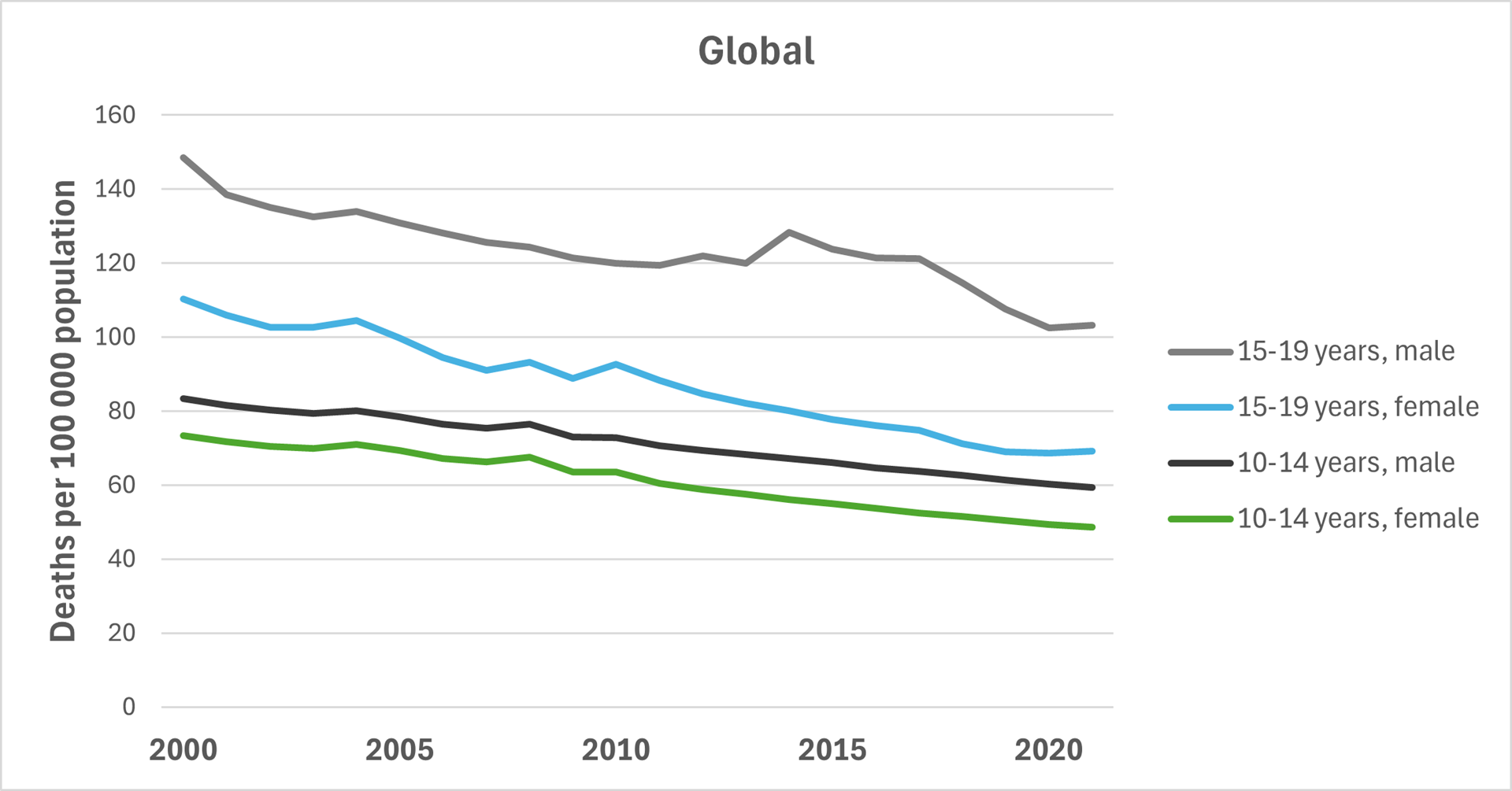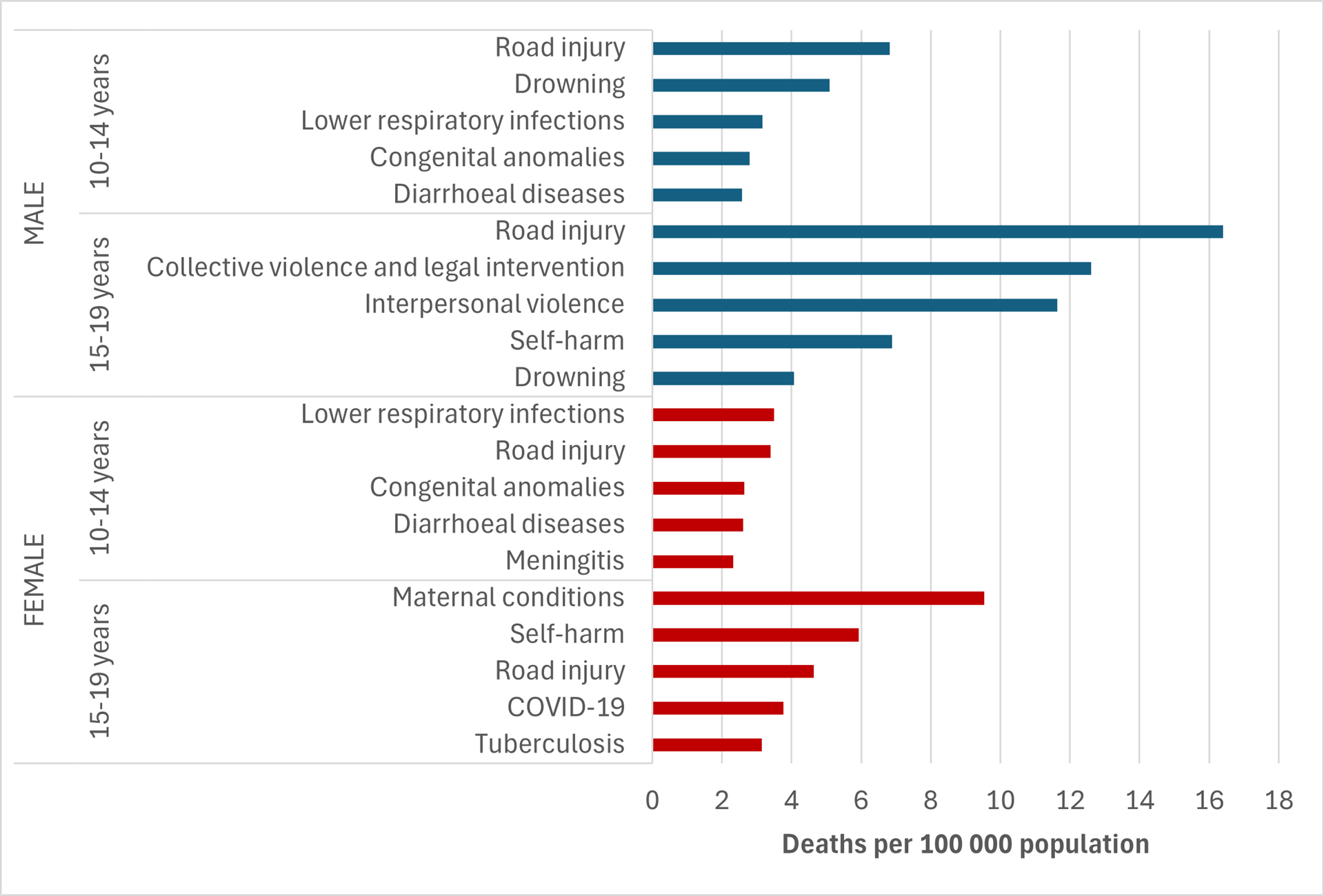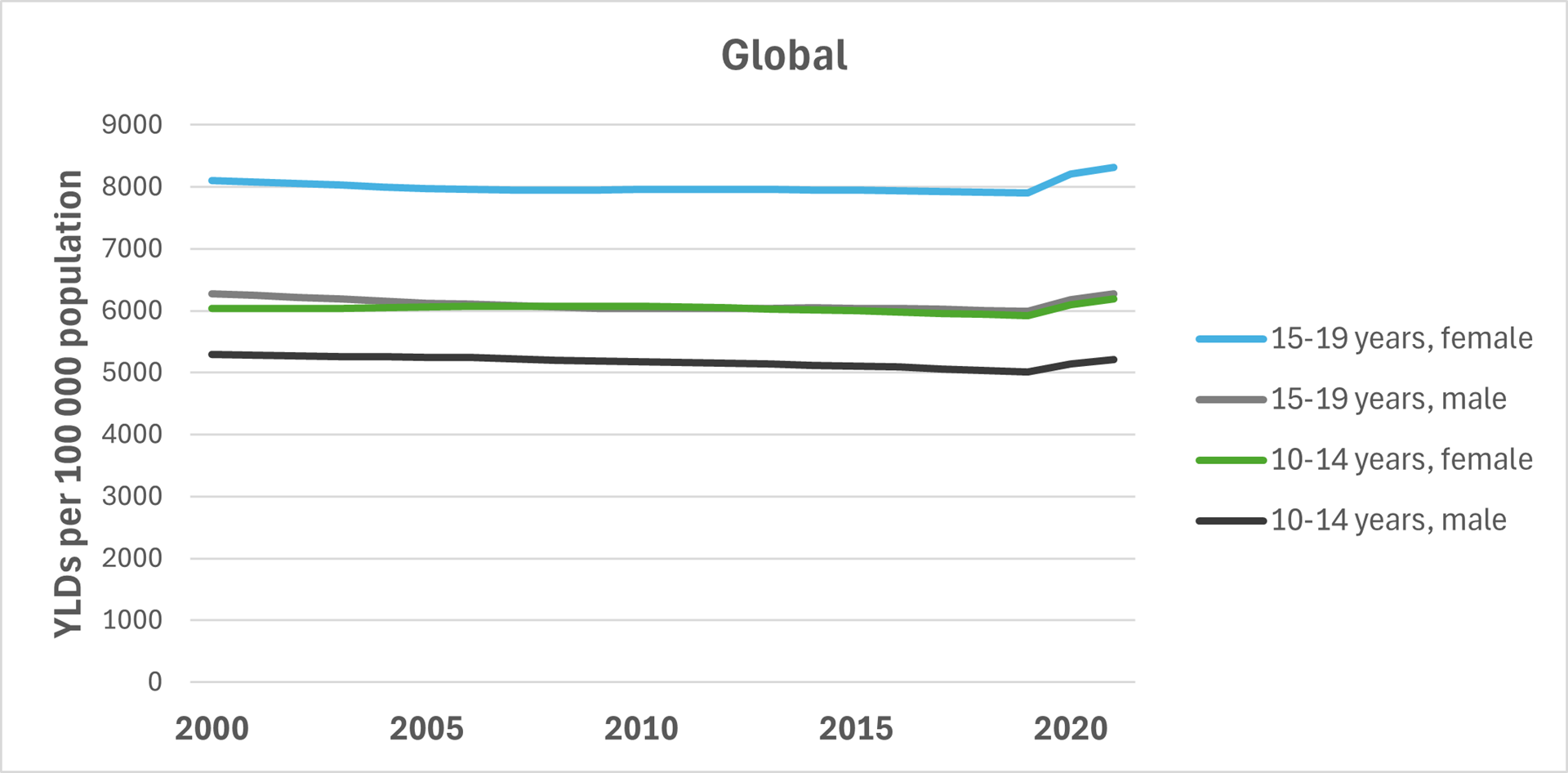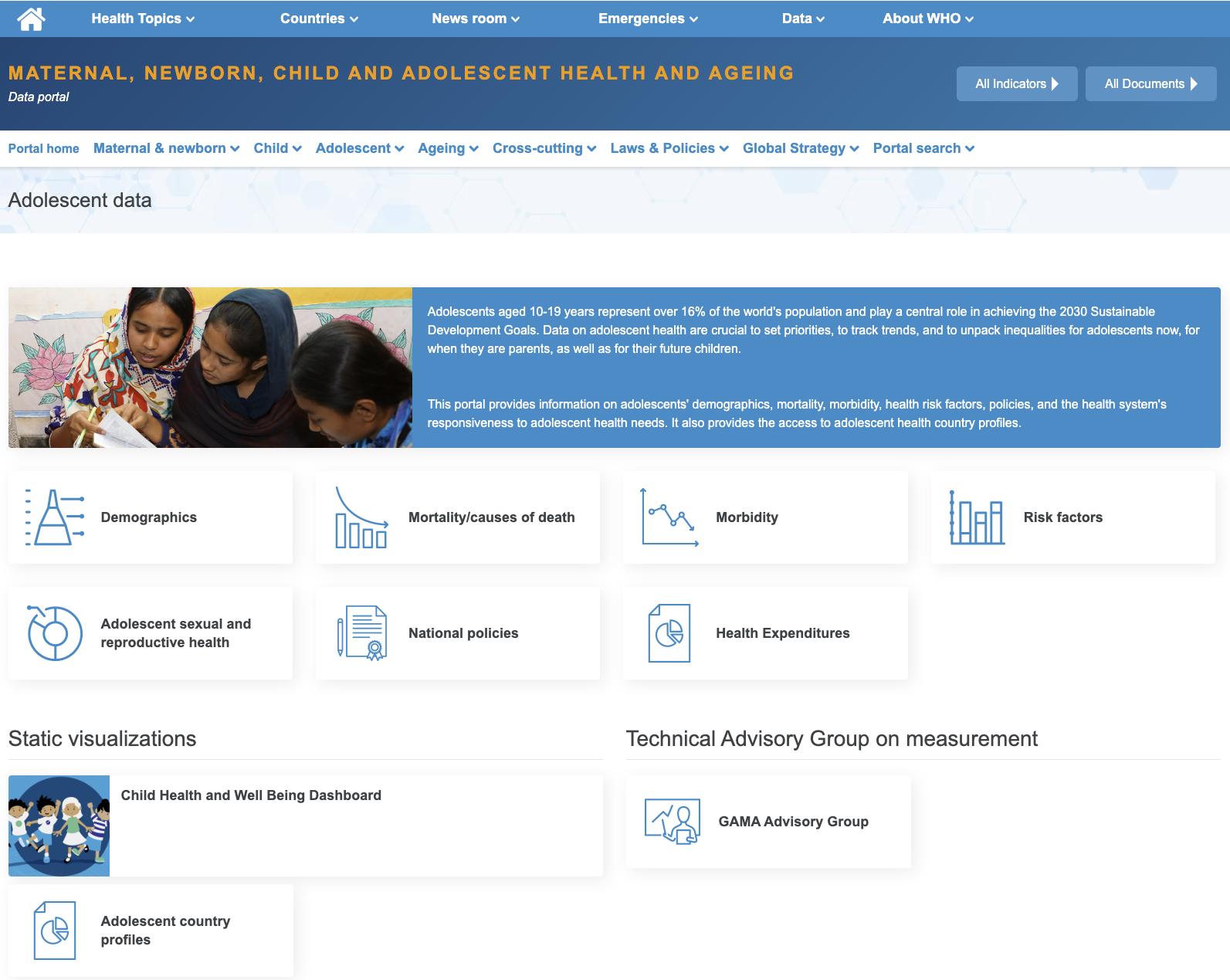
Please note that the mortality and morbidity estimates have been updated using the Global Health Estimates for the year 2021, published in 2025, and are therefore not in line with the estimates published in the PDF version of the AA-HA! 2.0.
Approximately 1.3 billion (16%) of the global population are adolescents, between the ages of 10 and 19 years.
Mortality
Over the last 20 years, mortality rates from all causes have declined among adolescents globally, with the largest decline in older (15–19 years) adolescent girls. However, progress has been uneven across different regions and adolescent population groups.
Globally, road injury was the most important cause of death for both younger (10–14-year-old) and older (15–19-year-old) adolescent males in 2021. Among adolescent females, the most important causes of death were lower respiratory infections in the younger group and maternal conditions in the older group.
Morbidity
Reductions in the burden of non-fatal diseases among adolescents have been limited over the past 20 years. In fact, there have been increases in some regions and age groups. Across regions, the main conditions causing this burden in 2021 were mental health conditions (depressive and anxiety disorders, childhood behavioural disorders), iron deficiency anaemia, skin diseases, migraine, and back and neck pain. Conditions such as malaria or drug use disorders were more common in certain regions.






